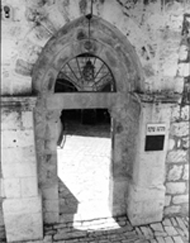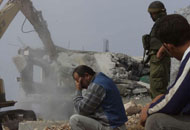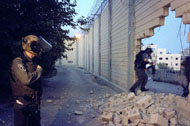
On Sunday, April 9, Palestinians everywhere will commemorate the 59th anniversary of the massacre at Deir Yassin. This massacre, carried out by the Zionist Stern and Irgun gangs, headed by Menachem Begin, is considered a bloody landmark in Palestinian history because it not only symbolizes the massacre of innocent people but also the concerted Jewish effort to depopulate an entire nation to make room for another.
In the pre-dawn hours of April 9, 1948, commandos from the two Zionist gangs stormed the small village of Deir Yassin, west of Jerusalem. By noon of that day, approximately one-seventh of the 750-resident population had been murdered over three phases. While the initial casualty list was reported at 254 people, both Palestinians and Israeli historians later confirmed the number was somewhere between 100-120 people. Apparently, the exaggeration of the body count was part of an Israeli scheme aimed at terrorizing other Palestinian communities into fleeing their homes.
According to documented studies posted on Deir Yassin Remembered (www.deiryassin.org), the attack took place in three phases: the “hot blood” massacre – the initial deaths that occurred during exchanges with the village’s resistance fighters; the “warm blood” massacre – which was the main massacre that resulted in the deaths of mostly women and children; and the “cold blood” massacre, which occurred after the resistance was defeated and the villagers were captured and paraded throughout streets of Jerusalem before being executed.
Research has also shown that, following the massacre, homes were demolished and looted and the village’s graveyard was destroyed. There were also testimonies of sexual assaults and brutal mutilation of bodies, although much of this information was obtained from survivor eyewitnesses.
However, the facts remain solid. Deir Yassin was strategically positioned on high ground to the west of Jerusalem. The famed Palestinian leader Abdel Qader Husseini had been killed days before at the Battle of Al Qastal and hence, Deir Yassin remained the most significant point for the invading armies towards Jerusalem.
In terms of the Jewish military forces engaged in battles throughout the country (there was yet no formal Israeli government or army), the massacre symbolized efforts to overtake as much Palestinian territory as possible before the British Mandate officially ended that May. The village of Deir Yassin even fell outside the borders designated by the United Nations partition plan to later become part of a Jewish state.
Following the massacre and the demolition of homes and graves, Deir Yassin was literally wiped off the map although some of its buildings still remain standing today. The inhabitants however, were completely ethnically cleansed, many survivors now living in Palestinian refugee camps. Jewish groups and later the Israeli army would succeed in bringing the same fate to 400 other villages, which eventually became part of Israel.
After the village was annihilated, it was not long before new Jewish inhabitants settled on its ruins. By September, Jewish immigrants from Poland had begun to arrive and settle in what was once Deir Yassin, renamed Givat Shaul Bet. Today, with Jerusalem’s expansion, the land of Deir Yassin falls between Givat Shaul and the western settlement of Har Nof.







